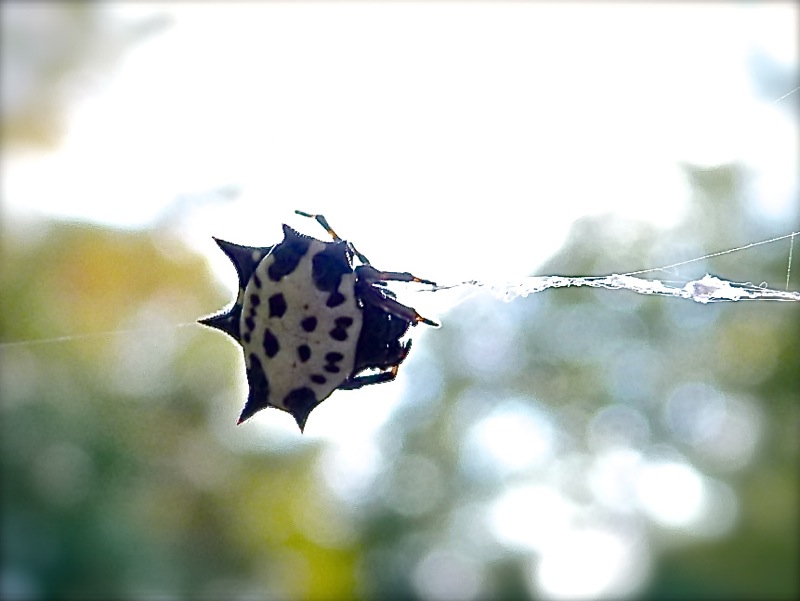Late Afternoon in the Woodland Garden
 Sunday, August 17, 2014 at 5:00AM
Sunday, August 17, 2014 at 5:00AM It is mid August, and I like to stroll through my woodland garden in late afternoon as the heat of the day subsides. Already I can feel hints of autumn in a cool breeze. Dusk has not yet begun to steal the light away, and the scene is breathtaking. I did not create my woodland garden with the transforming magic of late afternoon light in mind, but one could think so, if I were that talented a gardener. I am simply blessed.
Golden sun rays radiate through the entry to the woodland garden, illuminating the moss path and gilding the plantings:
I walk through the woodland garden slowly, dreamily admiring the light in the trees:
I gaze at the glittering leaves of 'Waterfall' Japanese maple: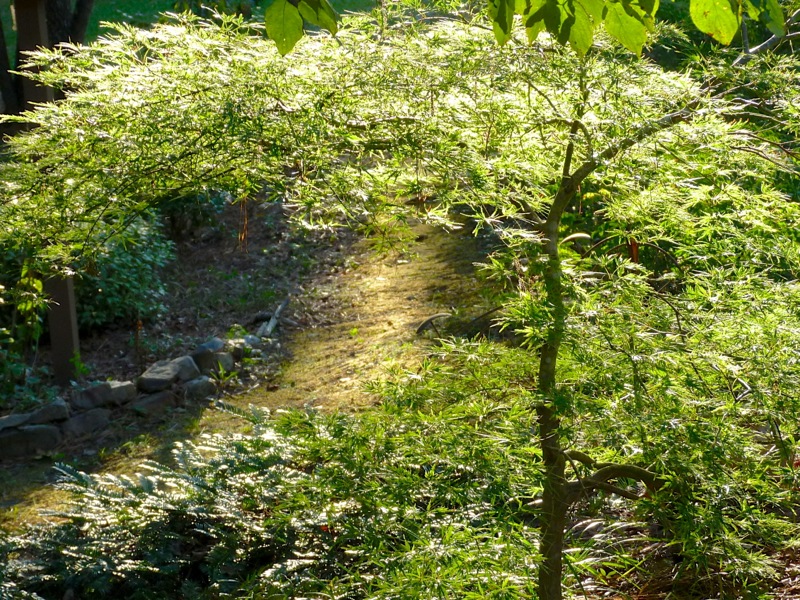
Here is the view across the main planting bed in the woodland garden:
Near the Japanese maple is 'Lady in Red' hydrangea, named for its striking red stems: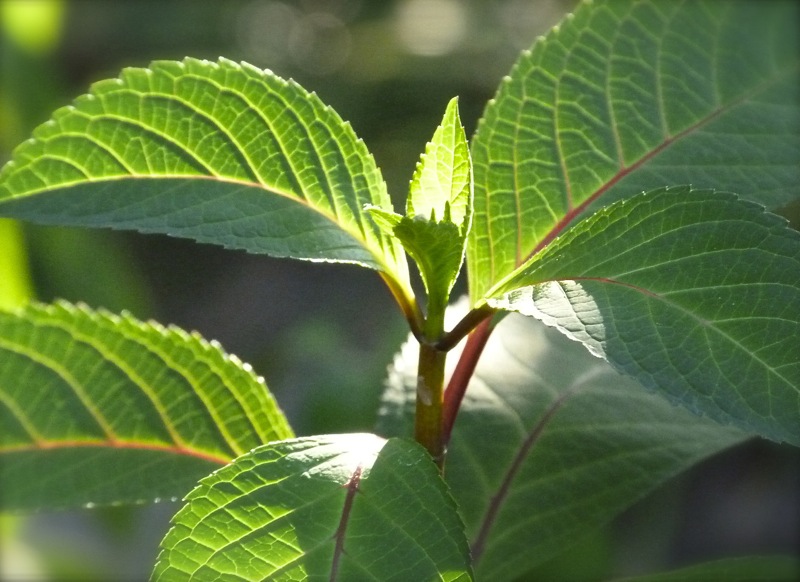
There are not many flowers in the woodland garden in August. An exception is this hosta 'Royal Standard' bloom: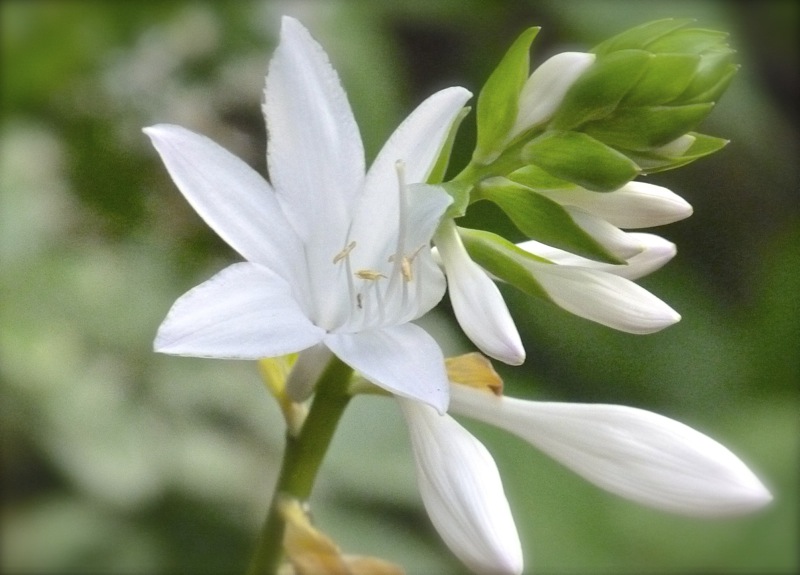
A few more lovely woodland plants catch my attention:Clockwise from top left: Abelia blooms; Variegated Japanese Pittosporum with Wood Aster in background; Japanese Painted Fern; Hepatica nobilis.I see a spider web, and I am reminded it will soon be "spider season", when female spiders build webs in a frenzy, preparing to catch food to sustain themselves while they mate and lay eggs. (The male spiders are so focused on the female spiders that they don't feed and die soon after their own role in reproduction is done.)

The late afternoon light glows through the fronds of a Birds Nest Fern. This is a tropical fern in a pot that I bring in for winter, but it flourishes outside through the summer in the woodland garden: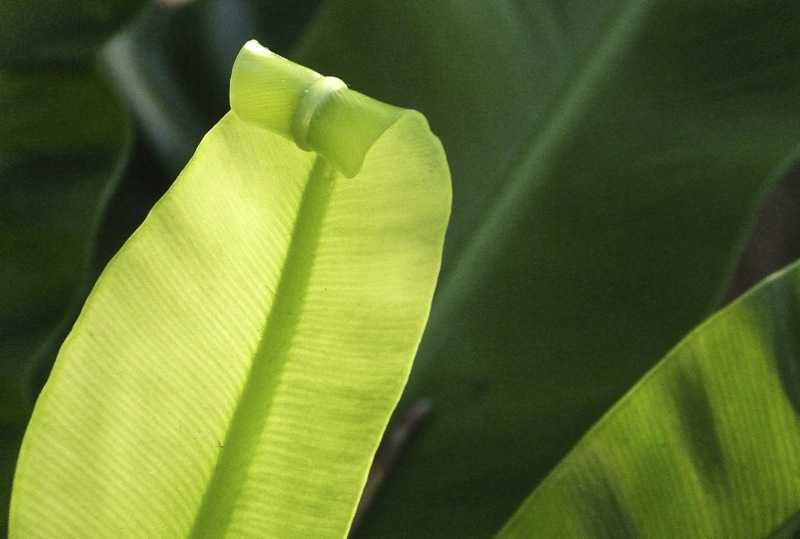
I find a small downy hawk feather caught in a branch.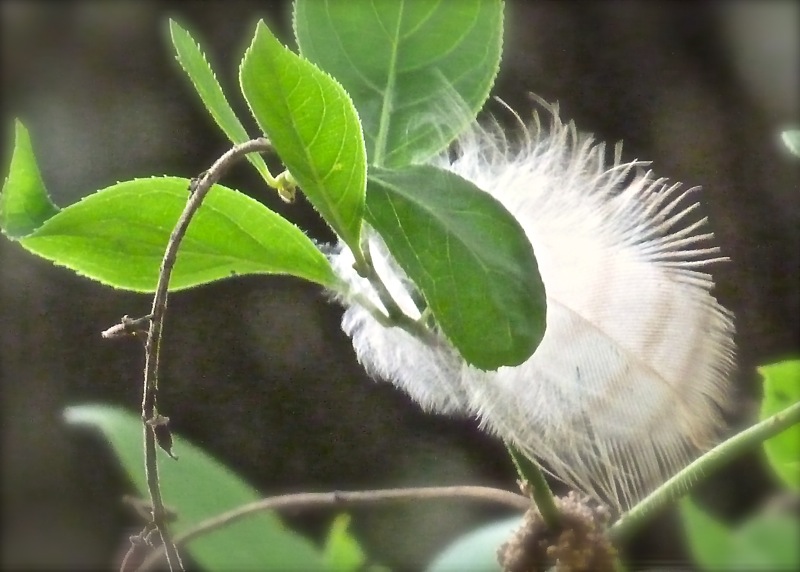 Then nearby I see a larger hawk feather on the ground. What story does this tell? Normal shedding, or something tragic?
Then nearby I see a larger hawk feather on the ground. What story does this tell? Normal shedding, or something tragic?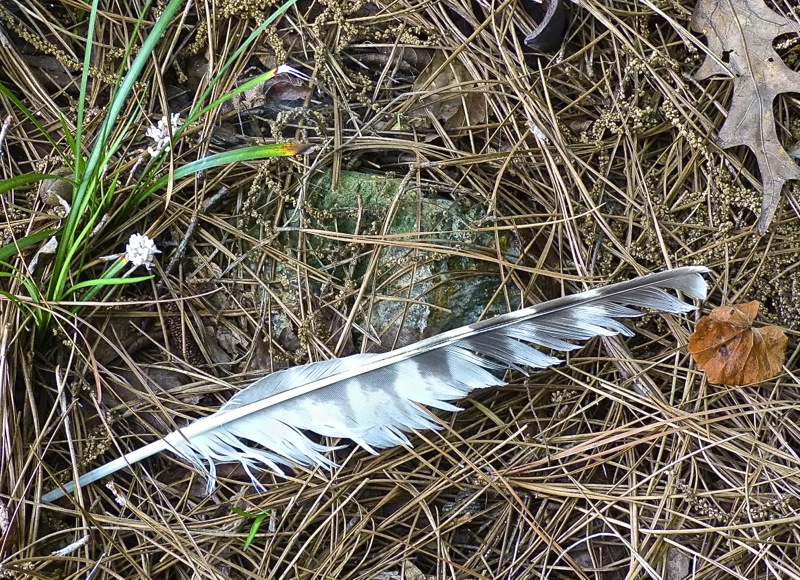 A nice breeze blows through the wind chimes.
A nice breeze blows through the wind chimes. I close my eyes and listen to the music.
I close my eyes and listen to the music.
The magic light that turns the woodland garden into a dreamland does not last long, and dusk creeps in. The mosquitos are biting. Time to go inside!

